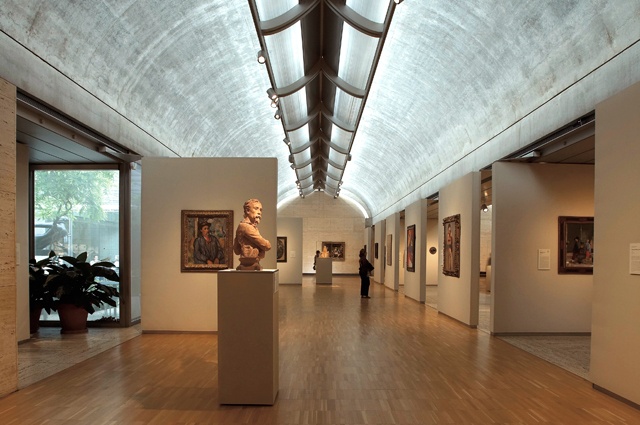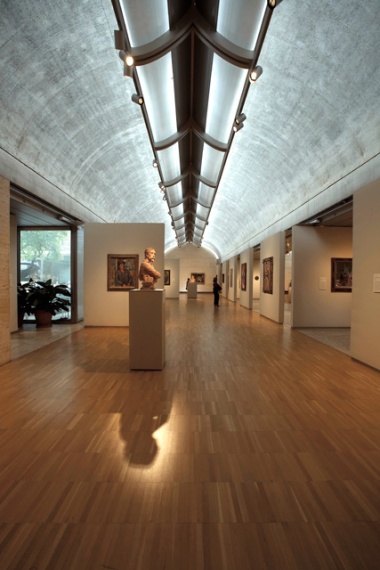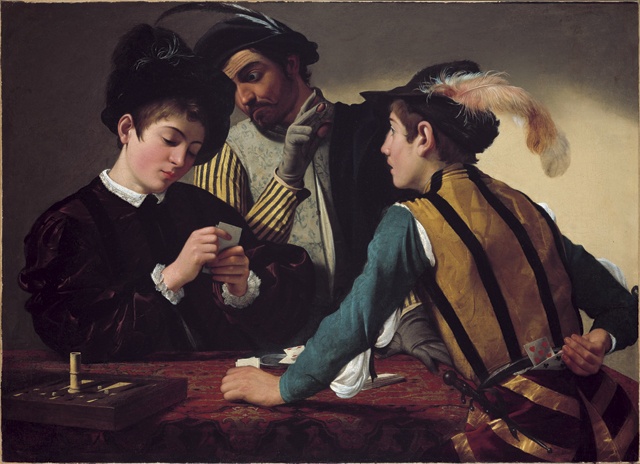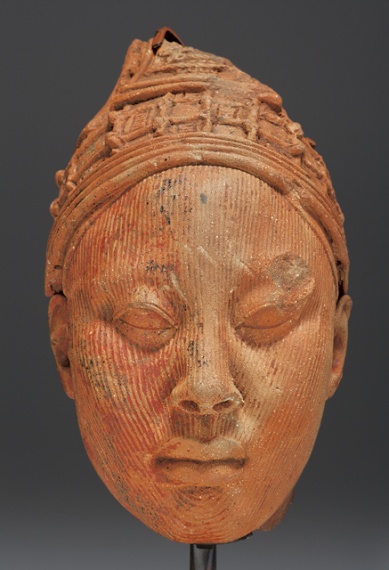Shuffling my feet, and wearing an audio player on a strap around my neck, I join the herd of humanity migrating from painting to painting during a French impressionist exhibition at Fort Worth’s Kimbell Art Museum. Moving as one through the gallery, we politely rush to the next Monet, the next Renoir, the next Pissarro.
Judging by our furrowed brows and the phone-like receivers held to our ears, an observer might think we’re trying to talk to these great 19th-century artists. Instead, we’re listening—the next-best thing—to a recorded audio-tour narrator provide context for the masterpieces we’re viewing.
Wedged in front of a Théodore Rousseau work, “Farm in Les Landes,” we visitors learn that it took the celebrated landscape artist almost 25 years to complete this oil painting of a farm in southwestern France. Rousseau was never satisfied with the piece and spent years obsessively painting the trees’ leaves, finessing the play of late-afternoon light. “I am refining it absolutely just as a watchmaker fine-tunes a watch after having finished it,” Rousseau wrote to the client who commissioned the painting—but didn’t receive it until after the artist’s death in 1867.
If Rousseau took that long perfecting this magnificent work—which initially drew mixed reviews—the least I can do is study it for more than a few seconds. I soften my gaze as the narrator repeats a common theme: Rarely did these artists experience instant fame. Many knew poverty and rejection. But all are represented in this international touring exhibition because they persevered. They never gave up.
It’s a message easily missed if one dashes from gallery to gallery in Fort Worth’s cultural district. Don’t misunderstand: The district’s five internationally recognized museums are each well worth visiting—one at a time, and at a leisurely pace.
Americans, says Nancy Edwards, a European art curator for the Kimbell, tend to underestimate visual art. Certainly, great paintings convey emotion. But their complex storylines are easily missed if we hurry by. The deeper experience—the reason we go to art museums, Edwards says—is that artwork is a form of expression reflecting a series of conscious decisions. The artist is trying to tell us something, and those messages “are as broad as the things that make us human beings,” she says.
So slow down, treat each painting as though it were a book and look—really look—for the plot. Instead of zipping through an entire collection in one afternoon, spend an hour with one painting, remembering there’s no substitute for the real thing: Reproductions can’t convey the colors, scale and brush strokes of the original work.
And start by getting to know one art setting, such as the architecturally intimate Kimbell that’s oft described as America’s best small museum. The Kimbell, Edwards says, is a jewel box, with each carefully collected piece, from Picassos to the earliest known painting from Michelangelo, a treasure easily examined in the diffused natural light cascading over the galleries.
Architect Louis Kahn died two years after his Kimbell showpiece opened in 1972. He designed the building to “give the comforting feeling of knowing the time of day”—a boost of light as visitors move from space to space, learning to pace themselves with the movement of the sun.
Kimbell at a Glance
Chief benefactors: Fort Worth businessman Kay Kimbell and his wife, Velma, both deceased, who started collecting paintings in 1935
Permanent collection: Comprising fewer than 350 works of art, the collection emphasizes quality over quantity. Its holdings range from the third millennium B.C. to the mid-20th century and showcase antiquities from ancient Assyria, Greece and Rome; Asian sculptures, paintings and ceramics; and pre-Columbian and African and Oceanic art.
Worth noting: The museum’s European painting collection features such luminaries as Picasso, Caravaggio, Rembrandt and Matisse. In 2009, the Kimbell purchased what is considered to be Michelangelo’s first painting: “The Torment of Saint Anthony,” an oil and tempera easel work completed around 1488.
Upcoming exhibition: “The Kimbell at 40: An Evolving Masterpiece,” scheduled from October 7 through December 30
Cowtown Culture
Fort Worth’s Cultural District is home to five internationally recognized museums (each offers free daily admission):
National Cowgirl Museum and Hall of Fame
——————–
Camille Wheeler, former associate editor




